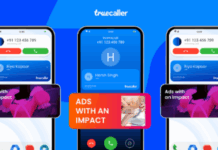
B2B exchanges have become more customer-centric in recent years – more akin to strategies traditionally thought of as better-suited to B2C. While there are still differences between the two strategies, whether you’re dealing with an individual end-user or a Fortune 500 company, a customer is a customer.
1. Find out your Customers’ Wants and Needs
It’s important to find out what customers want from you as a company. Let’s face it – people love talking about themselves – in fact, a study by the National Academy of Sciences proved that humans get a biochemical buzz when talking about themselves.
While getting customers to talk about their needs can help to establish an emotional, human connection, it also allows you to adapt your offer to better match their requirements – where possible.
2. Match and Manage Expectations
Though it is important to talk to customers about what they need, it’s equally as important to think about what they expect from you as a company: whether dealing with a new or existing customer, it’s almost certain that they will already have preconceived expectations of your business.
One way to maintain continued customer engagement is to ensure that your projected brand image is in line with how your brand functions in reality. As with any business, a customer’s experience with a brand must be in line with the expectations they already had, or they could start searching elsewhere for what they were actually looking for in the first place – it’s important to know what your customers want and expect from you.
Transparency is the key to making sure your customers have realistic expectations of your company, for both new and existing customers; whether it be press releases, sales figures, or timeframes for project completion, transparency is essential. Being optimistic but realistic about your company will ensure customers are not left feeling let down or cheated.
3. Connect with Customers Emotionally
Establishing an emotional connection with customers is usually associated with B2C rather than with B2B exchanges. However, some of the most influential B2B brands are swaying towards this approach in recent years.
According to a study by Google and CEB, B2B customers are around 10% more emotionally connected with their vendors than their B2C counterparts, and these business customers are 50% more likely to follow through with a purchase if they see personal value in their decision.
In an over-saturated and commoditised market where the price difference between competitors is often marginal, your company’s brand image could be the deciding factor – finding the right balance between taking a rational or emotional approach towards a B2B customer is vital.
4. Use Jargon the Right Way
The term ‘jargon’ gets a bad rap in the marketing world – some experts advise against using jargon altogether, advocating for simplicity.
Excessive use of jargon can alienate one side of an exchange from the other; the customer might feel lost or even less intelligent due to their perceived lack of knowledge; or they might be left with a bad taste in the mouth by a marketer’s excessive use of buzzwords in an attempt to ‘wow’ the client.
On the flipside, jargon, when used correctly, can have quite the opposite effect – it can identify you as an ‘insider’ in your field and establish a connection with the customer. Especially in B2B exchange, both parties should be reasonably knowledgeable about the product or service and its field. For this reason, it’s important to find the balance between appropriate and excessive use – using broad, general words rather than specialised terms could devalue the exchange, and fail to get the point across as intended.
5. Utilise Social Media
While social media has been massively successful in B2C exchange, many B2Bs don’t use social media to its full potential – B2Bs should be giving as much importance to social media as any of their other marketing strategies.
Using social media effectively can help to increase brand awareness and influence, however It’s also important not to come off as too promotional in your interactions on social media. Another use for social media is to gain insights into the market: follow experts and influential figures to see which topics and tags are trending in your sector; get involved in forums dedicated to your field, such as LinkedIn discussion groups.
Many B2B companies are realising that while business interactions should be professional, the businesses themselves are made up of individual people, who are just as driven by emotions and personal connections as everyone else.
Corporate Comm India(CCI Newswire)



























